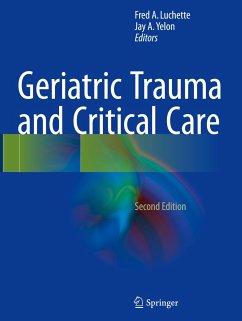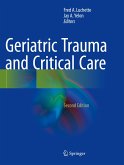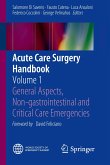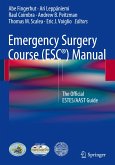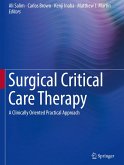With the expertise of an author panel of leading clinicians in the field of surgery, trauma, critical care and geriatrics the new edition of this text addresses the explosion in knowledge on the impact aging has on injury, acute illness and critical care management. The text covers the physiologic changes associated with aging, as well as the clinical assessment, stratification, and management of acute illness and injury. Furthermore, the new edition discusses the full spectrum of critical care management of the elderly.
Part I explores the impact of aging on health and the healthcare system. There will be detailed discussion on the physiologic effects of aging and the impact on clinical management. The management of common surgical emergencies in the elderly is addressed in Part II. Part III addresses the evaluation and management of trauma and injury. Finally, Part IV explores the specific challenges of critical care management, including end-of-life and ethics, in the geriatric population. Updated information, reflective of the expansive literature, is addressed in all sections. New to the second edition are chapters on prehospital care, burns, nursing concerns, and abdominal solid organ injury. Appropriate chapters will include case vignettes and clinical algorithms. All chapters include a bullet-point summary.
Geriatric Trauma and Critical Care, 2nd Edition will be of great value to trauma surgeons, acute care surgeons, critical care specialists, emergency medicine physicians, geriatricians, general surgeons, and trainees in surgery, critical care, and emergency medicine. Advanced practice nurses, critical care nurses, and physician assistants will also find this a useful and practical resource.
Part I explores the impact of aging on health and the healthcare system. There will be detailed discussion on the physiologic effects of aging and the impact on clinical management. The management of common surgical emergencies in the elderly is addressed in Part II. Part III addresses the evaluation and management of trauma and injury. Finally, Part IV explores the specific challenges of critical care management, including end-of-life and ethics, in the geriatric population. Updated information, reflective of the expansive literature, is addressed in all sections. New to the second edition are chapters on prehospital care, burns, nursing concerns, and abdominal solid organ injury. Appropriate chapters will include case vignettes and clinical algorithms. All chapters include a bullet-point summary.
Geriatric Trauma and Critical Care, 2nd Edition will be of great value to trauma surgeons, acute care surgeons, critical care specialists, emergency medicine physicians, geriatricians, general surgeons, and trainees in surgery, critical care, and emergency medicine. Advanced practice nurses, critical care nurses, and physician assistants will also find this a useful and practical resource.

